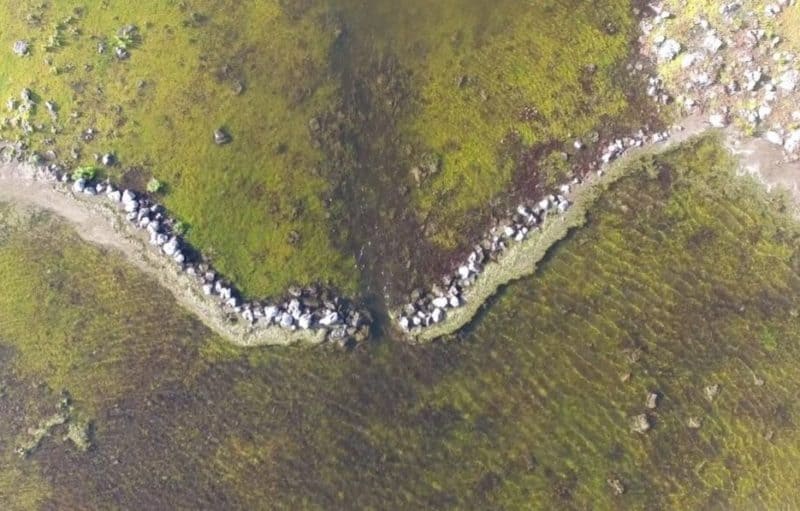PARK WATCH September 2019 |
VNPA’s Parks Protection campaigner Phil Ingamells reports from the Federal Court, where the Australian Brumby Alliance was challenging Parks Victoria’s alpine national park horse plan.
Having failed to convince Parks Victoria that ‘brumbies’ belong in Victoria’s Alpine National Park, an alliance of wild horse supporters ventured into the tricky realm of environmental law recently, in a last-ditch attempt to enshrine their version of alpine heritage protection.
The alpine feral horse issue has been debated for a decade or more in a series of exhaustive round tables within which the horse groups were well represented. Parks Victoria’s thorough process also included the VNPA, Indigenous consultation, a scientific reference panel, and animal welfare experts. But the damage done by feral horses to alpine systems was clear.
A draft horse management strategy was released (and received overwhelming public support) before Parks Victoria published its final Feral Horse Strategic Action Plan 2018–2021 for the Alpine National Park in June last year. It set targets to remove 1200 horses over three years from the eastern section of the park, and completely remove the smaller Bogong High Plains/Cobungra population.
The strategy was designed to be consistent with (and to answer the demands of) several federal and state environmental laws, and to put the park’s 2016 management plan to work.
The Australian Brumby Alliance disagreed, however, claiming the strategy violated some clauses in the listing of the Australian Alps National Parks as a National Heritage Place. That listing takes in all of the Australian mainland alpine region parks, including Victoria’s Alpine National Park.
The clauses they were depending on included ‘protection of the mountain vistas’ (the wild horses were part of that, they said), the ‘pioneering history’ (they were part of that too), and the ‘stories, legends and myths of the mountains’ such as the Man from Snowy River poem and the Silver Brumby books.
But as the case proceeded, it became clear it was going to be an uphill battle to protect feral horses in the park.
The National Heritage list sits within Australia’s Environment Protection and Biodiversity Conservation (EPBC) Act 1999. That Act also lists alpine ecosystems threatened by hard-hooved grazers: the peat beds and moss beds so crucial to the functioning of alpine catchments, and the watery fens that accompany them. It also lists a number of threatened alpine plants and animals affected by horses, such as the unfortunately named broad-toothed rat – it’s actually a charming fluffy mammal largely restricted to isolated high country populations.
There was another catch.
It was deftly argued by Parks Victoria’s counsel that, under the EPBC Act, it is only the place that is given heritage protection. The cultural values are listed because the place evokes those cultural associations. It’s not necessary to have a mountain horseman forever re-enacting his riding skills down some crazy slope, for example.
It’s why the listing includes the cattlemen’s heritage, but not the cattle. And, crucially in this case, it’s why the feral horses/brumbies aren’t specifically mentioned.
Laws are, for the most part, written very thoughtfully. And the Australian Heritage Council goes to considerable care when it lists places for protection.
The plants and animals in the Australian Alpine region are the product of 500 million years of terrestrial evolution. They have been knocked around a lot in the last 200 years by activities that some, in a limited acceptance of the vast passage of time, value over-highly as heritage.
It’s the native plants and animals that need our attention, not a continuation of their hard-hooved punishment by cattle, horses, pigs, goats and deer that have been driving species to the brink.
In summing up on the final day of the case, Parks Victoria’s counsel referred to the witness statements of alpine ecologist Dick Williams as “comprehensive and compelling”, adding that “courts rarely received evidence of such quality”.
Professor Williams’ knowledge of Victoria’s high country was not just based on his own extensive experience, but on the many decades of alpine science, reaching back to the journeys of Baron von Mueller in the mid-1800s. Not surprisingly, that great extent of alpine science is also cited in the alpine parks heritage listing.
For a number of legal reasons, some aspects were not considered relevant to the case. One of those aspects was an examination of the historical accuracy of the ‘brumby’ legends. In the following intriguing pages (18–20), the popularly accepted interpretation of that history is seriously challenged.
Whatever the judge finally decides, it might be a ruling referred to for many years to come.
The judgement in the case brought by the Australia Brumby Alliance against Parks Victoria in the Federal Court is pending.
Did you like reading this article? Want to be kept up to date about this and other nature issues in Victoria? Subscribe to our email updates.
You can also receive our print magazine Park Watch four times a year by becoming a member. Find out more here.
